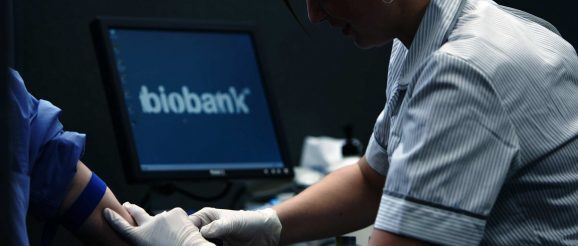New model science: how FROs can turbocharge scientific innovation

The UK BioBank is one of the most influential biomedical initiatives in the world. It contains genetic, health, and lifestyle data on half a million people and has been used to make extraordinary contributions to our understanding of human health. Over the past ten years, 28,000 researchers from 86 countries have used the BioBank to publish 4,600 papers and create new therapeutics and biotech companies. It has made it easier to spot dementia early and has allowed us to understand what factors make a person more susceptible to Covid-19.
All that success makes it easy to forget that when BioBank was first set up, academics were up in arms over what they saw as a departure from ‘standard academic scientific practice’. There were several gripes here: Not only was part of the BioBank set up as a limited company, with a CEO was appointed to run it, but it was also given more money and for a longer time frame than academic labs ever receive. The fusion of charity, government, business and academia was unorthodox and poorly received, but has ultimately proven its detractors completely wrong.
What BioBank demonstrates is that there is ample room for more innovation and experimentation when it comes to scientific funding and organisational structure.
As it stands, academic labs have a number of competing responsibilities. Many have to balance teaching undergraduates, giving PhD and masters students appropriate chunks of work, and other duties associated with being part of a university. That means they often have too much going on to focus wholeheartedly on a precise research goal.
Nor can we simply farm out research projects to innovative startups. One obvious reason is that startups usually rely on angel or venture capital investment and scientific research is often not obviously profitable, certainly in the short term. Indeed, the economist William Nordhaus estimates that innovators are only able to capture a tiny fraction, , of the value of the innovations they create. The proportion is even smaller for research that is fundamental and unlikely to have practical applications for the next few decades before the intellectual property runs out.
The answer is therefore to use the scientific method, which has been so valuable for understanding the natural world, to figure out the best way of doing science itself – to empirically test what the best institutional structures are for doing research.
The UK BioBank is one such experiment. It is too big to be done by a lab, too complex to be a multi-lab collaboration, and not profitable enough to be a company.
Focused Research Organisations (FROs) are another new model of funding science. As described in our new report with the Tony Blair Institute and Convergent Research, FROs sit separately from these traditional models and are structurally similar to the UK BioBank. They are run by full-time technical founders who manage a team of about 10-30 staff, pursuing specific, quantifiable, technical milestones instead of blue-sky research. When their goals have been achieved, FROs are wound down, but there are pathways for those involved to spin out companies, carry out new academic research, or found non-profits.
A major advantage of FROs is their time-limited nature. Many charities lose their focus as time goes on. Sometimes they are victims of their own success: they achieve their mission but are left with resources and staff and have to find a new purpose. A change of leadership can mean pulling an organisation in a new direction, which can understandably make donors cautious.
Instead, FROs can raise money for a specific goal and only pursue that goal. They do not need to worry about continually raising money and adapting their mission to make themselves more appealing to donors or investors.
There are some good opportunities for launching FROs in the UK. ARIA, the government’s new research agency, has a pot of £800m to spend on high-risk research. It plans to sponsor Programme Managers with specific goals, give grants, attract private co-financing, and has the power to spin out and take equity stakes in companies.
Healthcare is a good place to start. An FRO could partner with the NHS to create novel pandemic-prevention technology. For example, we could build new tools to enable the NHS to better monitor wastewater and spot emerging threats. This type of early detection already exists, and recently led to polio vaccine boosters being rolled out for children in London. Developing an automated system would allow us to use this technology more broadly.
Combating climate change is another area where FROs could have immense benefit. Oceanic carbon sequestration, for example, could remove carbon dioxide from the atmosphere and trap it in the sea. Many strategies, like stimulating the growth of algae, have been suggested, but few trialled at scale.
FROs have become increasingly popular among the community of people who are interested in ‘meta-science’, the study of how to improve science. They have friends in high places too: Eric Schmidt, former CEO of Google who now focuses his significant wealth on promoting talent, especially in interdisciplinary science, has tweeted his support for FROs; George Church, who published the first sequencing of the human genome and is now trying to clone the woolly mammoth, called FROs ‘a timely and much-needed approach with momentum behind it’. Given how quickly they are gaining support, we should expect to see the FRO model taken up in more parts of the scientific community over the next few years.
Currently the frontiers of human ingenuity are only pushed forward when they fit neatly into existing models. We can do better and FROs are the first step.
Click here to subscribe to our daily briefing – the best pieces from CapX and across the web.
The post New model science: how FROs can turbocharge scientific innovation appeared first on CapX.
